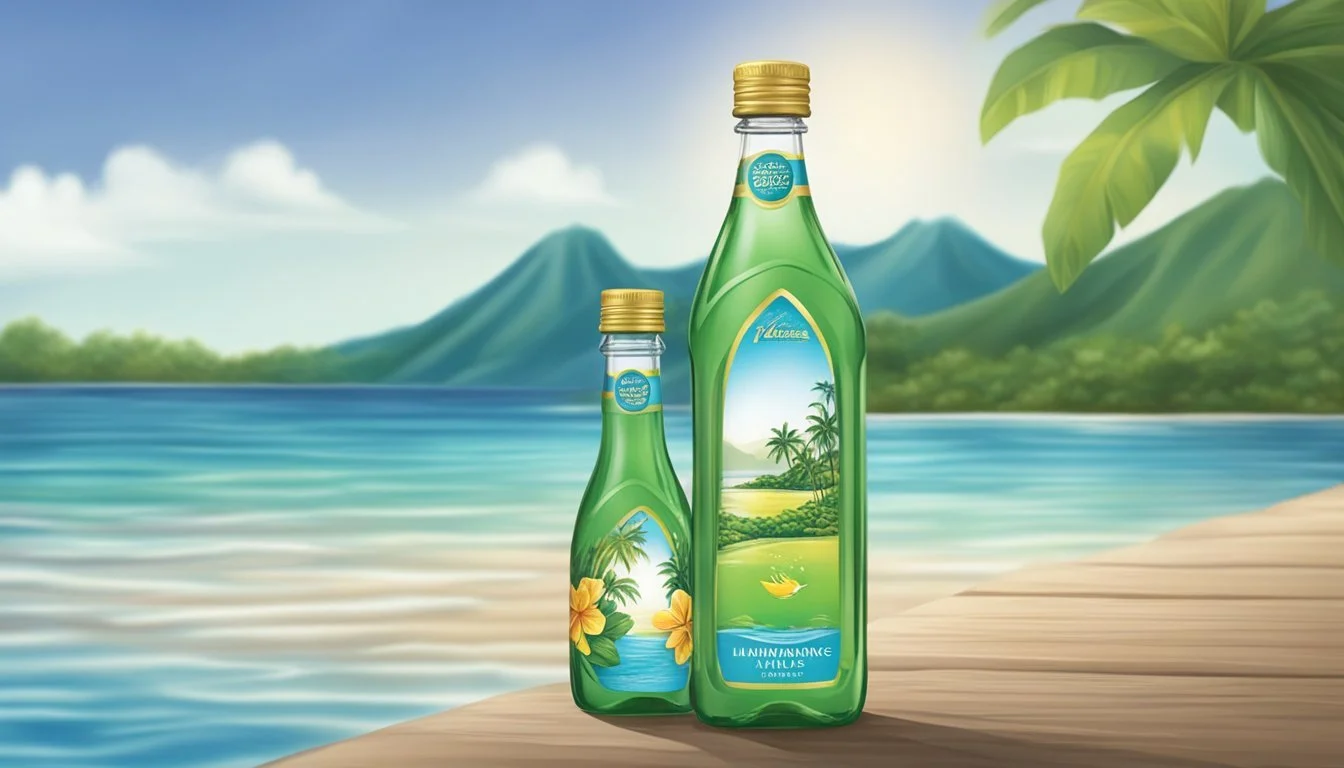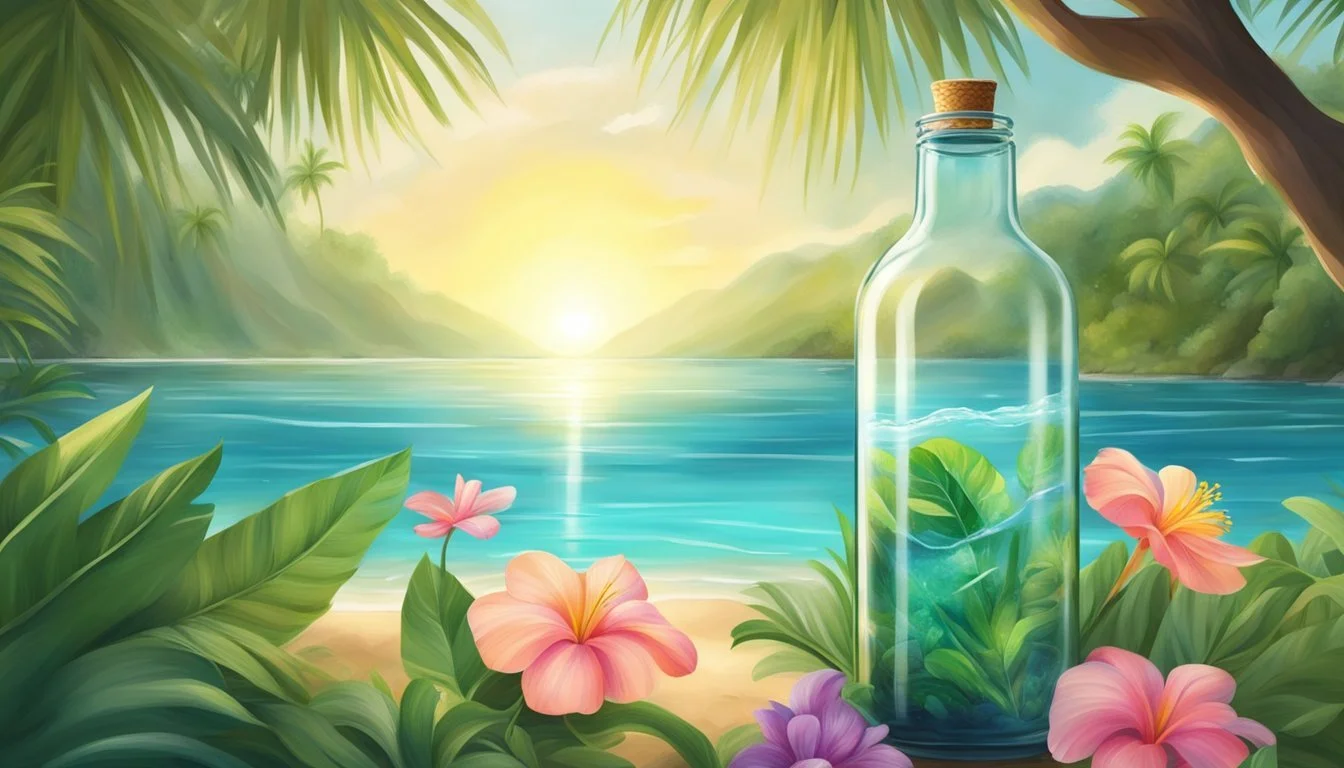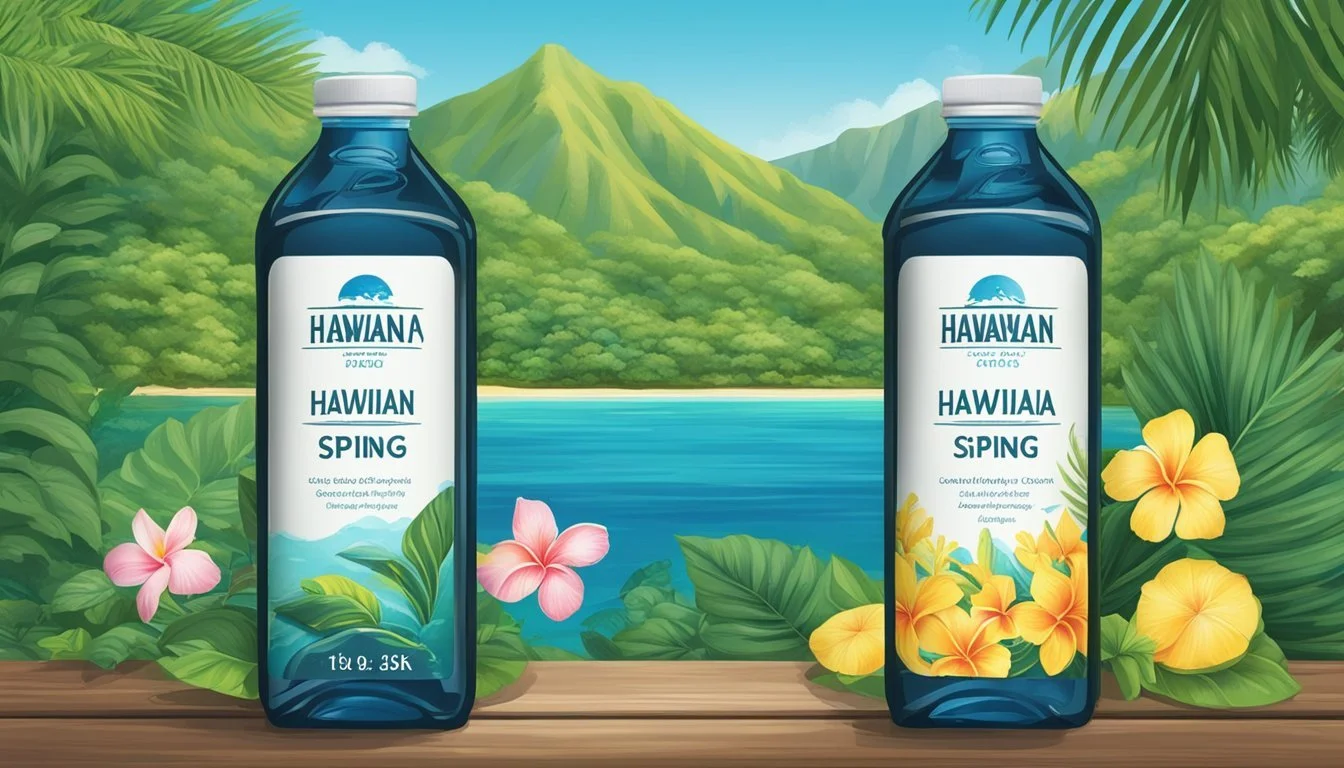Hawaiian Springs vs. Open Water
Comparing the Best Bottled Waters
When it comes to choosing the best bottled water, Hawaiian Springs and Open Water stand out as popular options. These brands are known for their unique sourcing and commitment to quality. Consumers seeking a refreshing and clean taste might find Hawaiian Springs more appealing due to its natural volcanic filtration process.
Hawaiian Springs water originates from ancient lava flows, providing a distinct and pure profile that's hard to match. On the other hand, Open Water markets itself with a focus on sustainability, packaging water in recyclable aluminum bottles which appeal to environmentally-conscious buyers.
Both brands offer unique benefits, but the decision often comes down to personal preference. Whether one is drawn to the natural purity of Hawaiian Springs or the eco-friendly packaging of Open Water, there are compelling reasons to consider both in their next bottled water purchase.
Understanding Bottled Water
Bottled water comes in various forms, including spring water, mineral water, and alkaline water. Each type has distinct characteristics based on its source and processing method.
Spring water originates from underground sources and flows naturally to the earth's surface. It often contains natural minerals. An example is Hawaiian Springs, which is drawn from an artesian aquifer in Kea'au, Hawaii.
Mineral water is sourced from mineral springs and includes various dissolved minerals and elements. By law, it must contain at least 250 parts per million of total dissolved solids, giving it a distinct taste.
Alkaline water is known for its higher pH level, usually above 8, and is often produced through electrolysis. Some believe it offers health benefits, but these claims are not universally accepted.
Tap water is commonly subject to extensive treatment and purification processes to ensure safety for public consumption. While it lacks the branding and convenience of bottled options, it is generally safe and cost-effective.
Comparisons:
Type Source Characteristics Spring Water Natural springs Contains natural minerals Mineral Water Mineral springs High in dissolved minerals Alkaline Water Various, processed Higher pH level Tap Water Municipal sources Treated and purified for safety
Understanding the differences between these water types can help consumers make informed choices based on their preferences and needs.
Source Analysis
The origin and treatment processes of bottled water can significantly impact its taste, quality, and environmental footprint. Understanding where Hawaiian Springs and Open Water draw their water from and how they process it provides valuable insights for consumers.
Natural Sources of Bottled Water
Hawaiian Springs sources its water from an artesian aquifer located beneath Mauna Loa, one of Hawaii’s largest volcanoes. The water travels through volcanic rock, undergoing natural filtration that enhances its purity and mineral content. This process provides the water with a unique taste profile, highlighted by its smoothness and subtle minerality.
The aquifer's location near the middle of the Pacific Ocean ensures a pristine environment, free from many pollutants found in more industrialized areas. Additionally, Hawaiian Springs' commitment to sustainable extraction practices helps preserve the aquifer’s long-term viability.
Processed Waters
In contrast, Open Water utilizes reverse osmosis and advanced filtration systems to purify its water. The water is typically sourced from municipal supplies, which are then subjected to rigorous treatment processes to remove impurities and contaminants.
Reverse osmosis forces water through a semi-permeable membrane, eliminating particles, minerals, and some chemicals, resulting in exceptionally purified water. This method aligns with Open Water’s focus on providing a clean, neutral-tasting product. Though it ensures high purity levels, it also strips the water of natural minerals present in spring or artesian water sources.
Open Water also emphasizes sustainability by using aluminum bottles that are more easily recyclable than plastic alternatives, aiming to reduce environmental impact while ensuring water purity.
Chemical Composition and Health Impact
This section explores the specific minerals and electrolytes in Hawaiian Springs and Open Water, as well as their pH levels and alkalinity, to understand their implications on health.
Minerals and Electrolytes
Hawaiian Springs water is known for its naturally occurring minerals and electrolytes. The water is sourced from renewable aquifers and contains minerals like calcium, magnesium, and potassium. These minerals are essential for maintaining various bodily functions such as bone health and muscle function.
Open Water, typically sourced from various locations, may have different mineral content. The exact composition often varies, but it generally includes sodium, calcium, and magnesium.
Minerals and electrolytes influenced taste and health benefits. The concentration of total dissolved solids (TDS) also varies between brands, influencing mineral content.
pH Levels and Alkalinity
Hawaiian Springs water has a natural alkaline pH of around 7.7, which can help neutralize acidity in the body and promote overall wellness. Alkaline water is often preferred by those looking to balance their body's pH levels.
Open Water's pH levels differ depending on the source. Some versions may be more acidic or closer to neutral. Alkalinity can impact taste and is believed to influence the hydration efficiency and overall balance in the body.
The alkalinity combined with mineral content can play a substantial role in health impact and is a key factor in consumer choice. The naturally alkaline quality of Hawaiian Springs is a distinctive feature that sets it apart from many competitors.
Taste Profile
When comparing Hawaiian Springs and Open Water, essential factors such as taste nuances, health implications, and mineral content emerge as critical points of consideration.
Palate Considerations
Hawaiian Springs water often garners praise for its refreshing and clean flavor profile. Derived from artesian wells, it is known for having a silky texture and slightly sweet undertone. This makes it a pleasing option for those who appreciate delicate and refined water tastes.
Open Water, on the other hand, is packaged in aluminum bottles and focuses on providing a pure, unaltered drinking experience. It typically has a neutral taste, which resonates well with consumers who prefer a straightforward water profile without noticeable mineral hints.
Mineral content plays a major role in the taste of both waters. Hawaiian Springs contains natural electrolytes, contributing to its slightly mineralized taste. This contrasts with Open Water, which is often touted for its minimal mineral influence, thus retaining a more basic flavor.
Brand Comparisons
Comparing the major bottled water brands reveals interesting differences in flavor, source, and quality. This section examines Hawaiian bottled water brands and global water brands to understand their unique characteristics.
Hawaiian Bottled Water Brands
Hawaiian Springs is sourced from the Big Island's natural aquifers. It boasts a soft, smooth taste due to its mineral content. Hawaiians value it for its purity and clean flavor. Waiakea offers volcanic water rich in electrolytes and minerals, sourced from the Mauna Loa volcano. This brand emphasizes sustainability, using eco-friendly packaging. Mauna Loa highlights alkalinity, claiming health benefits from its higher pH level.
These brands often emphasize environmental responsibility. Hawaiian bottled waters typically feature unique mineral compositions, making them stand out for both taste and perceived health benefits.
Global Water Brands
Essentia is known for its high pH level, marketed as hydration-boosting alkaline water. Fiji Water offers natural artesian water from Fiji’s aquifers, with a distinct taste due to silica content. Evian originates from French Alps springs, praised for its balanced minerals. Acqua Panna is Tuscan spring water, noted for its smooth texture. Dasani and Aquafina are purified waters with added minerals for taste.
Other notable brands include Icelandic Glacial and Voss, which highlight their pure sources. Smartwater is recognized for its vapor-distillation process. Finally, Mountain Valley Spring Water earns acclaim for its crisp taste and natural origin from Arkansas.
These global brands vary widely in their sources and processing methods, each offering distinct flavors and health claims.
Sustainability and Environmental Impact
Choosing between Hawaiian Springs and Open Water involves considering how each brand addresses sustainability and environmental impact. Key factors include the materials used in packaging and efforts to preserve natural water sources.
Packaging and Recycling
Hawaiian Springs primarily uses plastic bottles, whereas Open Water opts for aluminum cans. Plastic bottles are often criticized for their environmental footprint. They generate significant CO2 emissions during production and are less likely to be recycled effectively. While PET plastic can be recycled, it frequently ends up in landfills or oceans, contributing to plastic pollution.
Aluminum cans used by Open Water, on the other hand, have a higher recycling rate. Aluminum is infinitely recyclable without significant degradation, making it a more sustainable option. Recycling aluminum saves up to 95% of the energy required to produce new aluminum, reducing environmental impact. Therefore, Open Water’s packaging choice demonstrates a stronger commitment to sustainability.
Water Source Preservation
Hawaiian Springs sources its water from natural springs in Hawaii. These springs provide naturally clean drinking water but can be impacted by over-extraction. Sustainable harvesting practices are necessary to ensure that water levels remain stable and ecosystems are protected. Over-extraction could lead to depletion of natural water sources and harm to local environments.
Open Water emphasizes sourcing from locations with abundant freshwater supplies. They implement measures to minimize the environmental impact on these sources. By ensuring that extraction levels are sustainable, Open Water helps preserve natural water ecosystems. This responsible approach to water sourcing shows a commitment to environmental sustainability.
Choosing a brand involves not just the water’s quality but also how its production impacts the planet. Both packaging and water source management are crucial for understanding the full environmental impact of bottled water.
Consumer Insights
In comparing Hawaiian Springs and Open Water, it's important to consider consumer preferences and health and lifestyle trends. Both factors play significant roles in determining which brand meets the needs of modern consumers.
Market Preferences
Consumers often prioritize taste, packaging, and brand reputation when selecting bottled water. Hawaiian Springs is favored for its natural spring source from Hawaii, providing a distinct, pure flavor. Open Water, on the other hand, emphasizes sustainability with its recyclable aluminum bottles.
Brand Loyalty is strong for Hawaiian Springs due to its exotic appeal. However, environmentally conscious buyers lean towards Open Water, valuing its eco-friendly commitment. Market preferences also reveal a tendency to trust well-established brands that emphasize transparency in their sourcing and production methods.
Health and Lifestyle Trends
Health-conscious consumers prefer water brands with no additives or chemical contaminants. Hawaiian Springs markets its product as naturally alkaline and rich in minerals, appealing to those focused on a healthy lifestyle. Core Hydration, for instance, targets this same demographic with water that supports optimal pH balance.
Eco-friendly and sustainable choices are increasingly important. Open Water capitalizes on this trend by using BPA-free, aluminum packaging. As consumers become more aware of the environmental impact of plastic, many are shifting to brands like Open Water.
In addition, the preference for portable and convenient packaging plays a role. Water fountains, while convenient, are no longer the go-to as mobile, busy lifestyles demand portable hydration solutions. This trend reinforces the adoption of bottled water that aligns with personal and environmental health goals.
Legal and Health Regulations
Ensuring the safety and compliance of bottled water involves strict adherence to various regulations and standards. The following sections examine the compliance measures and certifications that Hawaiian Springs and Open Water must meet.
Compliance and Safety
Bottled water, including Hawaiian Springs and Open Water, must meet federal regulations to ensure safety. The FDA regulates bottled water under the Federal Food, Drug, and Cosmetic Act. These regulations mandate that bottled water is safe for consumption and free from contaminants.
Hawaiian Springs and Open Water must undergo rigorous water treatment processes to remove impurities. This includes filtration, UV light treatment, and ozonation. Health regulations also require regular testing to ensure that water quality meets established standards. The FDA's standard of identity for bottled water specifies limits for contaminants, ensuring consumer safety.
Certifications and Standards
To maintain high water quality, both Hawaiian Springs and Open Water must obtain various certifications. These certifications validate their compliance with stringent standards. NSF International and the International Bottled Water Association (IBWA) are key organizations providing these certifications.
Both brands must follow Good Manufacturing Practices (GMP) to ensure consistent safety and quality. These practices cover all processes from bottling to distribution. IBWA certification involves annual audits, reinforcing that companies meet or exceed federal and state regulations. Additional certifications may include ISO 22000 for food safety management, further assuring consumers of the water's integrity.
Certifications from recognized bodies help ensure that the bottled water remains free from harmful contaminants and impurities. This consistency in meeting regulatory standards builds consumer trust and guarantees safety in every bottle they purchase.
Innovation in Bottling
In recent years, there have been significant advancements in the bottling industry aimed at enhancing water quality and consumer safety. Reverse osmosis has emerged as a key process, effectively removing impurities and ensuring that bottled water meets high standards of purity.
Filtration methods have also evolved. Modern water filters are designed to remove contaminants while maintaining essential minerals, offering a balanced mineral content for a healthier consumption experience.
Deionization is another innovative technique. It involves the use of specially designed resins to remove ions from the water, further purifying it. This step is crucial for brands aiming to offer water with minimal mineral content.
Some brands add minerals after purification to enhance taste and health benefits. Added minerals can include calcium, magnesium, and potassium, each contributing to the water's overall profile and appeal.
Comparison Table
Process Hawaiian Springs Open Water Reverse Osmosis Yes Yes Filtration Advanced Standard Deionization No Yes Added Minerals Natural Synthetic
Hawaiian Springs utilizes natural filtration methods, allowing the water to retain its natural mineral content, while Open Water employs more technological approaches to purification, including deionization and adding synthetic minerals for consistency.
The innovation in bottling techniques plays a pivotal role in determining the final product's quality. Whether through advanced filtration or precise deionization, these technologies contribute significantly to the appeal and safety of bottled water.
More About Hawaiian Springs
Acqua Pana vs Hawaiian Springs: Which Bottled Water is Better?
Aqua Carpatica vs Hawaiian Springs: Which Bottled Water is Better?
Aquafina vs Hawaiian Springs: Which Bottled Water is Better?
Arrowhead vs Hawaiian Springs: Which Bottled Water is Better?
Boxed Water vs Hawaiian Springs: Which Bottled Water is Better?
Castle Rock vs Hawaiian Springs: Which Bottled Water is Better?
Core Hydration vs Hawaiian Springs: Which Bottled Water is Better?
Deer Park vs Hawaiian Springs: Which Bottled Water is Better?
Essentia vs Hawaiian Springs: Which Bottled Water is Better?
Hawaiian Springs vs 1907water: Which Bottled Water is Better?
Hawaiian Springs vs 7-Select: Which Bottled Water is Better?
Hawaiian Springs vs Alkaline88: Which Bottled Water is Better?
Hawaiian Springs vs Antipodes: Which Bottled Water is Better?
Hawaiian Springs vs Big Chill: Which Bottled Water is Better?
Hawaiian Springs vs BodyArmor: Which Bottled Water is Better?
Hawaiian Springs vs Cascade Mountain: Which Bottled Water is Better?
Hawaiian Springs vs CBD Living: Which Bottled Water is Better?
Hawaiian Springs vs Crystal Geyser: Which Bottled Water is Better?
Hawaiian Springs vs Crystal Lake: Which Bottled Water is Better?
Hawaiian Springs vs Essence pH10: Which Bottled Water is Better?
Hawaiian Springs vs Hawaii Volcanic: Which Bottled Water is Better?
Hawaiian Springs vs Kirkland Signature: Which Bottled Water is Better?
Hawaiian Springs vs Liquid Death: Which Bottled Water is Better?
Hawaiian Springs vs Mananalu: Which Bottled Water is Better?
Hawaiian Springs vs Proud Source: Which Bottled Water is Better?
Hawaiian Springs vs Pure Life: Which Bottled Water is Better?
Hawaiian Springs vs Purely Sedona: Which Bottled Water is Better?
Hawaiian Springs vs Refreshe: Which Bottled Water is Better?
Hawaiian Springs vs Richard's Rainwater: Which Bottled Water is Better?
Hawaiian Springs vs Simple Truth: Which Bottled Water is Better?
Hawaiian Springs vs Solan de Cabras: Which Bottled Water is Better?
Hawaiian Springs vs Talking Rain AQA: Which Bottled Water is Better?
Hawaiian Springs vs The Well: Which Bottled Water is Better?
Hawaiian Springs vs Tru Alka: Which Bottled Water is Better?
Hawaiian Springs vs Weird Water: Which Bottled Water is Better?
Hawaiian Springs vs Whole Foods 365: Which Bottled Water is Better?
Hawaiian Springs vs Whole Foods Italian Still Mineral water: Which Bottled Water is Better?
Ice Mountain vs Hawaiian Springs: Which Bottled Water is Better?
Icelandic Glacial vs Hawaiian Springs: Which Bottled Water is Better?
Just Water vs Hawaiian Springs: Which Bottled Water is Better?
Mountain Valley Spring Water vs Hawaiian Springs: Which Bottled Water is Better?
Nestle Pure Life vs Hawaiian Springs: Which Bottled Water is Better?
Poland Spring vs Hawaiian Springs: Which Bottled Water is Better?
San Pellegrino vs Hawaiian Springs: Which Bottled Water is Better?
Smartwater vs Hawaiian Springs: Which Bottled Water is Better?
Topo Chico vs Hawaiian Springs: Which Bottled Water is Better?
Zephyrhills vs Hawaiian Springs: Which Bottled Water is Better?
More About Open Water
Aqua Carpatica vs Open Water: Which Bottled Water is Better?
Cascade Mountain vs Open Water: Which Bottled Water is Better?
Core Hydration vs Open Water: Which Bottled Water is Better?
Crystal Geyser vs Open Water: Which Bottled Water is Better?
Hawaii Volcanic vs Open Water: Which Bottled Water is Better?
Icelandic Glacial vs Open Water: Which Bottled Water is Better?
Mountain Valley Spring Water vs Open Water: Which Bottled Water is Better?
Nestle Pure Life vs Open Water: Which Bottled Water is Better?
Open Water vs Kirkland Signature: Which Bottled Water is Better?
Open Water vs Whole Foods 365: Which Bottled Water is Better?
Richard's Rainwater vs Open Water: Which Bottled Water is Better?
San Pellegrino vs Open Water: Which Bottled Water is Better?
Solan de Cabras vs Open Water: Which Bottled Water is Better?
Talking Rain AQA vs Open Water: Which Bottled Water is Better?
Whole Foods Italian Still Mineral water vs Open Water: Which Bottled Water is Better?










